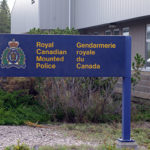Home »

Exploring yesterday…today
By Honor Neve
Spring is in the air and lambing season has begun!
At Fort Steele Heritage Town we have welcomed our first Cotswold lamb.
Expectant ewes and newborn lambs are housed in the maternity barn at the NWMP Post so our dedicated livestock crew can keep a close watch over both mother and baby.
The Cotswold breed of sheep originates from the Cotswold Hills of England, less than 20 miles from the Welsh border, and was one of the most popular breeds during the 1800s; today it is considered a rare heritage breed.
In the 1980s the Cotswold ewe population in Canada was estimated to be just 35. However, since 1991 there has been an increased interest in the breed and the number of sheep and breeders has risen once again.
Today Fort Steele is one of only eight registered Cotswold sheep breeders in Canada.
During Fort Steele’s boom period sheep farming was popular in the East Kootenay and the Cotswold would have been an excellent choice for farmers in the 1800s due to the breed’s ability to grow twice as much wool as other breeds. Cotswold sheep can grow 12 inches of wool per year and produce 15 pounds of wool per shearing, whereas most sheep grow six inches per year and only seven pounds per shearing. Cotswold sheep are sheared twice a year, usually in April and again in September.
Another reason Cotswold sheep were popular in the 1880s is that they usually have twins, singles and triples are quite rare, so each year a farmer could potentially double the size of their flock. Cotswold sheep can also maintain a healthy weight off of a relatively small amount of feed, are excellent foragers and can thrive in harsh climates, making them ideal for the East Kootenay. They can be either black or white although blacks are much rarer. The first black Cotswold was only recorded in Kentucky in 1858.
This past week I ran into a member of our staff out walking one of our Cotswold rams. It was a strange sight to see a Victorian lady with a large black ram at her side but the practice is intended to help socialize the sheep and make them easier to handle. Many of our sheep have been socialized this way and may come up to the fence for a pet. If you’re out at Fort Steele make sure to keep an eye out for Mrs. Lewis out walking one of our sheep!
#DidYouKnow #NewLambs #FortSteele #ExploreYesterdayToday







